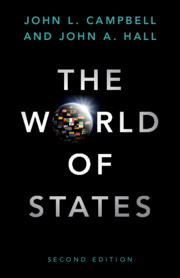Book contents
- The World of States
- The World of States
- Copyright page
- Contents
- Tables
- Preface to the First Edition
- Preface to the Revised, Second Edition
- Introduction
- 1 The Past
- 2 Conditions of Existence, Old and New
- 3 Challengers?
- 4 States of the Global South
- 5 The North
- 6 Still the Strongest Power on Earth?
- Conclusion
- References
- Index
5 - The North
Published online by Cambridge University Press: 28 May 2021
- The World of States
- The World of States
- Copyright page
- Contents
- Tables
- Preface to the First Edition
- Preface to the Revised, Second Edition
- Introduction
- 1 The Past
- 2 Conditions of Existence, Old and New
- 3 Challengers?
- 4 States of the Global South
- 5 The North
- 6 Still the Strongest Power on Earth?
- Conclusion
- References
- Index
Summary
The most striking feature about the North in the postwar period has been the increasing integration that has taken place within it. Genuine interdependence has come about under the American umbrella, allowing states in both Southeast Asia and Europe to become formidable players in the world economy. One claim that has frequently been made is that there will accordingly be convergence within capitalist society, with every country moving to a similar set of institutions. We reject this view in the first section of this chapter: capitalist society has been diverse in the past, and there are strong reasons to suggest that it will remain so. We then consider a second claim, curiously different in character from that of the first in that it suggests that a leading edge within capitalist society may challenge the United States. This was once believed about Japan!
- Type
- Chapter
- Information
- The World of States , pp. 148 - 185Publisher: Cambridge University PressPrint publication year: 2021

